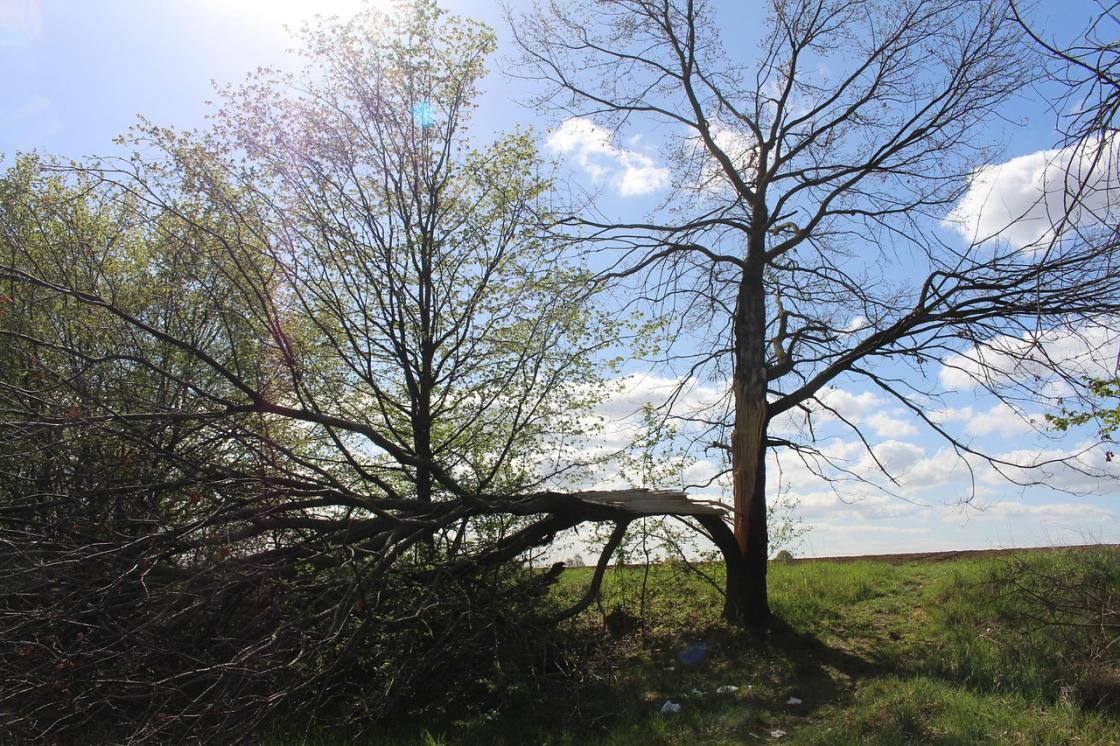
A lightning strike over a forest canopy. Photo from Pixabay
Cliff Abenaitwe, July 14, 2025
It's a disturbance as ancient as the forests themselves, yet its impact has been largely underestimated—until now. A new study, published in the journal Global Change Biology, has revealed that lightning is a far more significant cause of tree mortality than previously thought, killing up to 340 million trees globally each year.
This groundbreaking research by a team of researchers from the School of Life Sciences at the Technical University of Munich, led by Andreas Krause, not only quantifies the scale of this natural phenomenon but also sounds a warning about the reliability of climate models that have failed to account for it.
For decades, scientists have grappled with a significant "knowledge gap" in how and why trees die. While stand-replacing events like wildfires and large-scale windthrows capture headlines and are included in climate models, the silent, small-scale mortality of individual trees or small clusters of trees has been difficult to quantify.
Building on a growing body of evidence from field studies—particularly in tropical forests in Panama—the team developed a new module to simulate lightning-induced tree mortality.
More Than a Single Strike: The "Flashover" Effect
The notion that a lightning strike kills a single tree is a common misconception. As the study explains, research in the Barro Colorado Island (BCI) forest in Panama has shown that a single cloud-to-ground lightning strike can kill multiple trees, not just the one that is directly struck. The electricity can "flashover," jumping across air gaps to neighboring trees up to 45 meters away.
"Without prior knowledge of the lightning strike, lightning mortality is often overlooked or erroneously attributed to other causes such as storms, droughts, or biotic agents," the researchers explain.

A tree damaged or split by lightning. Image by obenbleibenstuttgart from Pixabay
A Global Tally: The Staggering Numbers
With the model validated, the researchers set out to answer a question that had never been quantified: How many trees are annually killed by lightning globally? The results are staggering.
Based on two different products of cloud-to-ground lightning densities, the simulations suggest that between 301 and 340 million trees die each year from lightning strikes. This contributes to 0.21-0.30 gigaton of dead biomass annually, which represents 2.1-2.9% of total killed biomass globally.
The study goes even further, revealing the profound impact this has on the planet's overall carbon balance. The simulations show that if lightning-induced tree mortality didn't exist, the global biomass would be 1.3-1.7% higher. Spatially, the impact is not uniform; the highest lightning mortality is simulated in the tropical forests of Africa, a region with a high density of lightning strikes.

Dense tropical forest. Image by Greg Montani from Pixabay
A Call for More Data
While the study presents a powerful new framework, the researchers acknowledge the need for more data. They note that the model's accuracy varies across different forest types and that "more data on lightning-induced tree mortality across different forest types would be desirable for more accurate model calibration and evaluation."
This is a call to action for researchers to expand their efforts beyond the well-studied tropical forests and begin quantifying lightning's impact in temperate, boreal, and other forest ecosystems.
